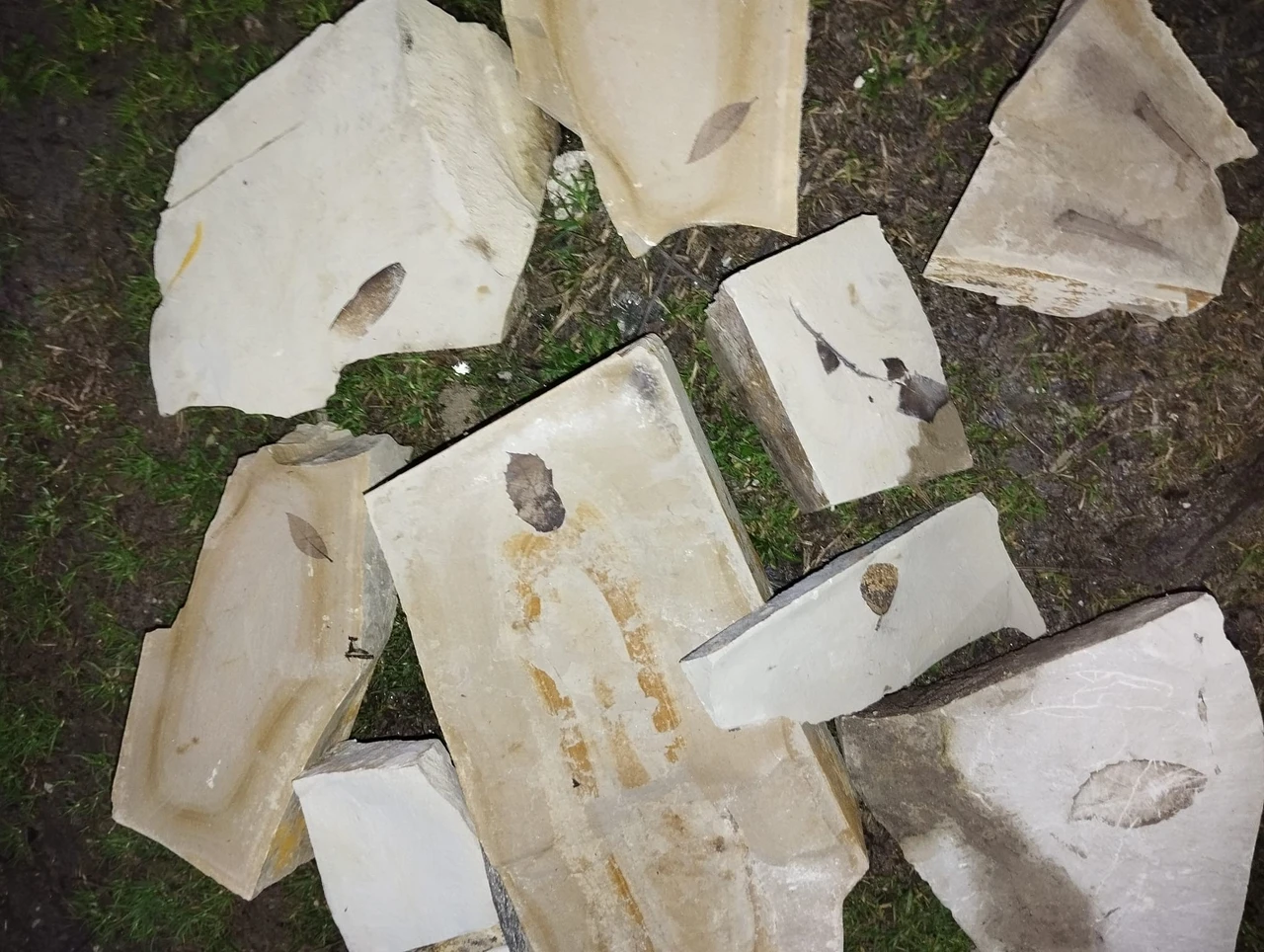15-million-year-old leaf fossil unearthed in Kusadasi sheds light on Aegean’s ancient climate
 During a land survey conducted between Yayla and Kirazli villages in the Kusadasi district of Aydin, Türkiye, leaf fossils estimated to be 15 million years old were unearthed, April 6, 2025. (IHA Photo)
During a land survey conducted between Yayla and Kirazli villages in the Kusadasi district of Aydin, Türkiye, leaf fossils estimated to be 15 million years old were unearthed, April 6, 2025. (IHA Photo)
A fossilized leaf believed to be 15 million years old has been discovered in Kusadasi, a coastal district in Türkiye’s Aydin province.
The remarkable find was made between Yayla and Kirazli villages during a geological field survey, drawing attention from the scientific community for its potential to reshape our understanding of the region’s prehistoric climate and vegetation.

Spotted by a university student during routine rock studies
The ancient leaf fossil was uncovered by Murat Ugur Sunetci, a geology student from Hacettepe University, while examining the area’s rock formations. The fossil was embedded within layers of clay-rich limestone, a composition that helped preserve the leaf’s intricate structure over millions of years.
“These are the leaves of plants that lived 15 million years ago,” Sunetci explained. “They were trapped and preserved within muddy and calcareous sediments at the time. Over the ages, these leaves fossilized within the clay-limestone deposits.”

Window into the Miocene era
Experts believe the area where the fossil was found contains sedimentary deposits from the Miocene epoch, a period that spans from about 23 to 5 million years ago. This geological layer is known for harboring rich fossil records, and this latest discovery adds to its scientific significance.
The well-preserved vein structures on the leaf fossil make it particularly valuable, offering rare insight into the flora that once thrived in the Aegean region during a warmer, more humid climate.

A scientific milestone for the region
The fossil samples have been sent to university laboratories for detailed analysis. Specialists say the discovery is a vital step in decoding the Aegean’s ancient geological story. It may provide new information on climate patterns, environmental changes, and biodiversity during the Miocene period in what is now modern-day Türkiye.



